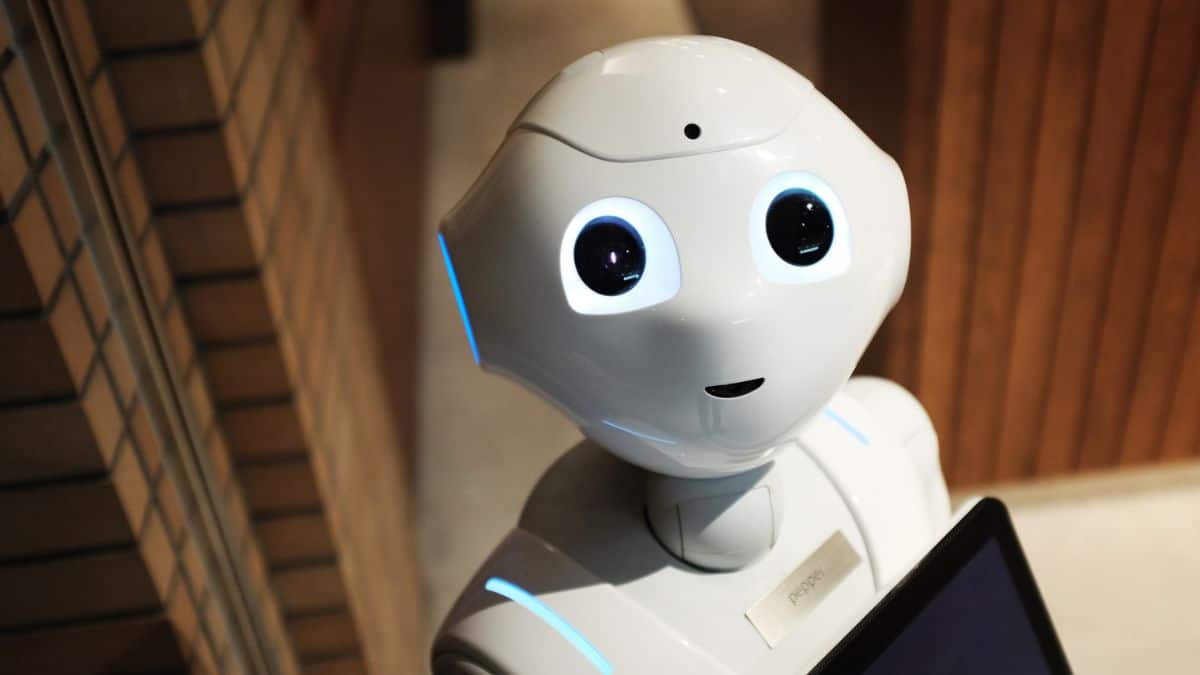Three examples of robots in everyday life

Robots are a staple of science fiction, but they’ve become part of our everyday lives without us even noticing it. These machines are changing how we live and work, from digital assistants to collaborative robots.
Benefits of robots in our daily lives
Here are a few benefits of robots in our daily lives:
Time-Saving & Productivity
Automating repetitive tasks can help us be more productive and focus on other essential things. Automated machines, or robots, can take on challenging and time-consuming tasks to help employees be more efficient at work.
Safety
Robotics technology has created machines that can assist us in performing tasks deemed too complex or dangerous for humans, such as exploring nuclear power plants or deep underwater. In other cases, robots help with more mundane chores like vacuuming the floor or mowing the lawn. Additionally, they are increasingly playing critical roles in transportation by serving as co-pilots in airplanes and drivers of cars.
Improved Operation
Robots can make network and electricity systems run smoother by automatically repairing issues as they arise, meaning that people have to intervene less often and that response times are quicker if a problem arises.
Less Human Errors
Robots offer a higher level of accuracy than humans in many settings, thus reducing the incidence of human error. With people and robots working together, we can take on dangerous tasks without putting any lives at risk.
Examples of Robots in Everyday Life
There are plenty of examples of where you might come across robots in your daily life; let’s take a look at a few:
Collaborative robots
Collaborative robots, or cobots, work with humans to fulfill various factory and workplace tasks. They are safe to use because a human operator controls their movements. By working with humans instead of autonomously, cobots assist people in completing more complicated tasks that they wouldn’t be able to do alone.
Collaborative robots, or “cobots,” are often used in efficiency-centered settings, such as factories, warehouses, and households. However, cobots robots aren’t just restricted to industrial workplaces, you may find them where speed and agility are key to success, such as shopping centers or airports.
Many experts believe that collaborative robots will play a big role in business success in the future. By working collaboratively with humans, they have the potential not only to increase productivity but also to reduce workplace accidents. As such, they could be a valuable asset for any company.
Industrial Robots
Many people think of robots as futuristic machines found only in science fiction, but the reality is that they have been used in industry for decades. Robots have proven their efficiency and effectiveness, from assembly lines to dangerous tasks such as working with nuclear materials.
Their use has helped streamline many processes and improve overall safety in the automotive and healthcare industries. But industrial robots are not just limited to factories – they also play a crucial role in agriculture, construction, and logistics.
Robotic technology has already become ingrained in our daily lives, from the food we eat to the products we purchase online, delivered to our doorsteps. As advancements continue to be made, it’s exciting to think about all the ways industrial robots will further integrate into our daily lives in the future.
Educational Robots
Education robots are designed for use in schools to allow students to explore their interests and investigate topics without the risk of injury. Children’s models of these robots are available because they have increased safety features, aren’t as likely to cause damage if something goes wrong, and are usually less expensive.
The integration of educational robots into everyday life is becoming more and more common. From teaching children essential coding skills to aiding surgeons in complex operations, these robots provide a unique opportunity for hands-on learning and efficiency. As technology becomes increasingly advanced, educational robots will continue to expand into new industries and job markets. However, we must utilize these robots responsibly. They can significantly improve our work processes, but we must also consider ethical concerns such as equal access and human replacement in the workforce.
Conclusion
As robotic technology continues evolving, we frequently see them in our daily lives. They can be found in many places, including manufacturing plants and grocery store checkouts. This allows humans to focus on more important tasks while increasing productivity and safety standards. As technology progresses and becomes more advanced, their role will only grow, and the future will be more likely to be shaped by robots.

